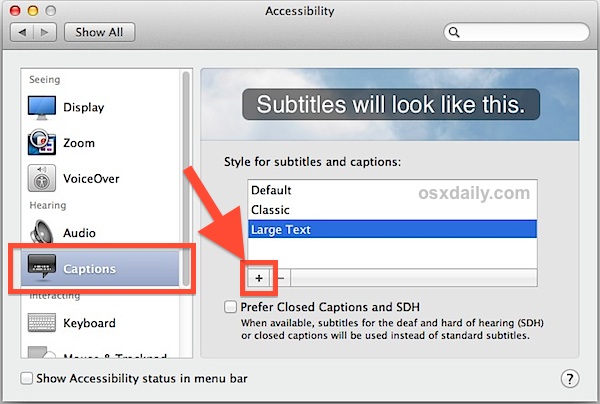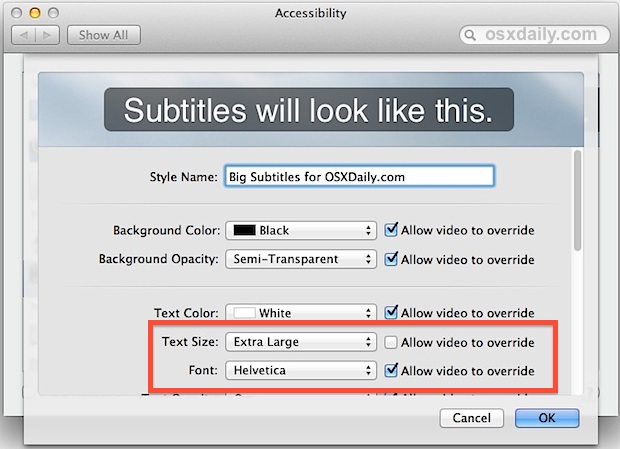Change the Subtitle Font Size for iTunes Video Playback in Mac OS X

The default subtitle text size for video playback can be fairly small in Mac OS X, and while it may be tolerable on a smaller screened device, once you send the Macs display it to a larger screen like a TV, it can be difficult to read. Fortunately, Mac OS X provides a lot of customization for subtitles, letting you change the font size, shadows, colors, and perhaps most important, the actual size of the captioned text. We’re going to focus on the latter, since the text size is usually what impacts readability of closed captioning the most. Whether you watch a lot of foreign films with subtitles, just want the text to be included with a video, or you use captioning for accessibility reasons, you’ll probably appreciate this change.
For some quick clarity, subtitles are sometimes called Closed Captioning elsewhere in iOS and Mac OS X (like in iTunes), so either term may be used, and don’t be surprised if some apps use one term where other apps use another.
- Open System Preferences from the Apple menu and head to “Accessibility”
- Find the “Hearing” section in the left side menu and choose “Captions”
- Create a new custom subtitle choice by selecting the [+] plus button, or choose one of the three default styles: “Default”, “Classic”, or “Large Text”
- Give the new subtitle style a name, like “Big Subtitles by OSXDaily”, many adjustments are available but we’ll focus on font size and font
- Select “Text Size” and choose an appropriate option, and then go to “Font” and pick an easy to read font (default of Helvetica is good)
- Click “OK” to set that as the new default, then leave System Preferences for changes to take effect


For consistent results, uncheck the box for “Allow video to override” for each settings change made. Not doing so may make a movie control the font and size, which can use sizes all over the place.
Keep in mind that even though closed caption controls are contained within the Accessibility panel, they have use beyond individuals with hearing difficulties. Watching foreign language videos with bundled captions will trigger subtitles in your default system language, and many users who want to watch movies in silence or at low volume choose to use subtitles to keep things quiet. It’s also common for educators to enable video closed captioning for use with students, since it can aid in reading and comprehension.
Regardless of what it’s used for, you’ll find it changed in that same Accessibility panel, and the setting will impact all Apple apps that offer subtitles and closed captioning on video playback, including QuickTime, the DVD Player app, iTunes video, and all TV shows and movies from iTunes Store with the [CC] badge as well.


Can’t find the Captions iten (in the Accessibility) in Mountain Lion…
You need OS X Mavericks to gain the customizations for subtitles